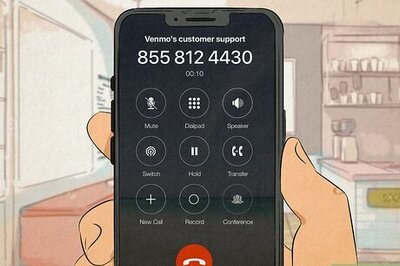
views
When a woman in Oregon, Ohio, placed an order over the phone for a large pizza, the 911 dispatcher on the other end of the line told her she had the wrong number.
But the woman was insistent. “No,” she said repeatedly. “You’re not understanding.”
Eventually, the dispatcher caught on. “I’m getting you now, OK,” he said, according to audio of the November 13 phone call released this week, before asking if the perpetrator was still there.
Placing a coded call is a common way domestic abuse victims can signal for help without jeopardizing others’ safety, according to the National Domestic Violence Hotline, which provides lifesaving tools and support to abuse victims.
This time, the technique, which the caller in Oregon was using to report an attack on her mother, resulted in the arrest of Simon Lopez, who faces a misdemeanor domestic violence charge, Chief Michael Navarre of the Oregon Police Division said Saturday.
The mother told authorities that Lopez had come home intoxicated and that he hit her on her right arm and pushed her into a wall, according to a police report.
Navarre identified the dispatcher on the call as Tim Teneyck, who he said had been on the job in Oregon for 14 years.
“He did a great job,” the chief said, adding that he asked all the right questions. “He got the crews there. He told them to cut their sirens before they got there because the woman had ordered a pizza, and he didn’t want them to spook this guy into fleeing or continuing the assault.”
The Oregon Police Division plans to train dispatchers to be on the lookout for these types of calls moving forward, Navarre said.
“It had a happy ending,” he said. “We know what happened in this situation. We don’t know what would have happened had the operator hung up on her.”
On average, there are 650,000 911 calls a day in the United States, according to the National Emergency Number Association, which works to improve the 911 system through research, training and education. Because there are no national minimum training guidelines for 911 operators, the responsibility for adequate training falls to states and local jurisdictions, the group said.
Emergency call takers are trained for active listening, April Heinze, an operations director for the association, said Saturday. “They are trained to get clues from what they are hearing in the background of a call.”
Disguising calls for help is a common safety strategy survivors use, according to Katie Ray-Jones, chief executive of the National Domestic Violence Hotline, which operates 24 hours a day, seven days a week.
Code words that signal a need for help are also an important part of developing an exit strategy, Ray-Jones said Saturday. “It’s an easier way to get help without jeopardizing others’ safety around them, particularly children.
“To be able to mask that outreach is really important,” she added.
However, she warned that strategies such as ordering a pizza, which was also depicted in a 2015 Super Bowl commercial about domestic violence, may eventually become too familiar for survivors to use and could tip off abusers.
“Great strategies come up, and then perpetrators get informed about what their strategies are, and then we’re, as advocates, pivoting once again to what’s another strategy we can utilize,” she said.
An exact address is the most important information to relay in the event that a caller can’t talk about what’s happening, Ty Wooten, education director for the emergency number group, said.
“If somebody can tell us where they are, and if that’s the only thing they can tell us, then further questions can be asked,” he said.
Derrick Bryson Taylor c.2019 The New York Times Company




















Comments
0 comment